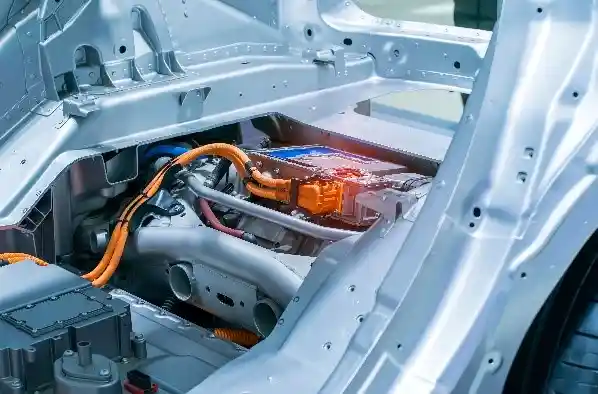
Battery electric and plug-in hybrid vehicles have become a common sight on Canadian roads. With the target of 100% zero-emission vehicles (ZEVs) sales by 2035 set by the federal government¹, the number of battery electric vehicles (BEVs) will keep growing. Globally, the sales of BEVs is projected to reach 300 million by 2050².
While a shift to electric transportation can help Canada meet its net zero targets, it also poses new challenges. Most of the conversations are currently focused on two areas – the availability of minerals and metals required for the production of electric vehicle (EV) batteries and EV battery recycling. Experts are also exploring another important topic: utilizing EV batteries that have reached their end-of-life in vehicles for different applications – essentially, giving them a second life.
What is the lifecycle of EV batteries?
Battery electric vehicles on the market today typically use lithium-ion batteries (LIBs), which consist of multiple lithium-ion cells that are assembled into larger battery packs. When LIBs retain less than 80% of their full charging capacity, they are no longer considered suitable to power a vehicle³. Depending on their design, these EV batteries can be refurbished, or they can be repurposed for other applications, such as stationary energy storage or to power things like wheelchairs and drones.
When repurposed LIBs hold only 15-20%³ of their original capacity, they can be recycled to recover valuable materials, including nickel, cobalt, lithium, graphite, and manganese. These recovered materials can then be used to make new LIBs.
This lifecycle of EV batteries aligns with circular economy principles, which require products and materials at the end of life to re-enter the economy to extend their value and reduce waste generation and the need to source virgin raw materials.
What is the second life of EV batteries?
At the end of their first life, EV batteries can be refurbished or reconditioned for reuse. They can also be repurposed for different applications with lower power requirements. This may involve a partial disassembly of a battery pack, replacement of low-performing cells, and reassembly of the battery pack in its original or different format.
The process also involves diagnostic and screening tests to identify battery chemistry, design, as well as the state of health (SOH) of each battery cell. SOH assessments help determine the suitability of LIBs for a specific application.
The typical ‘first life’ of batteries in EVs can range from 10-20 years. That means reused and repurposed EV batteries have not been in use long enough to correctly measure their second life span. Some estimates put the expected life of repurposed EV batteries between 5 to 10 years.
How can standards help facilitate the second life of EV batteries?
According to the International Energy Agency, the number of EV batteries reaching the end of their first life is expected to surge after 20304. While the second-life EV battery business is in the early stages of development, many different business practices and approaches are being considered and could benefit from some form of standardization.
For example, as noted in the CSA Group research report Circularity and Recycling of Lithium-Ion Batteries for Electric Vehicles – Standardization and Safety Requirements, battery reuse/repurposing companies use various proprietary SOH testing equipment and protocols. Standardized SOH testing could help address the need for transparency and traceability of information on EV battery history, as well as new methodologies for SOH testing.
The research report also highlights the opportunity for standards, guidelines, and policies to support EV battery circularity. Standardization around circularity could support a broad system for safe and reliable reuse, repurposing, and recycling of EV batteries. EV battery circularity standards would also encourage harmonization of requirements and regulations across North America.
As public and private fleet operators undertake a significant transition from traditional gas and diesel vehicles to battery EVs, the adoption of large battery systems presents fleet operators with distinct challenges and risks. There is a growing demand for clear guidance and standards to support the secure and efficient management of battery EV maintenance facilities in this environment, driven by the pressing need for optimization and sustainability of batteries.
Read the full CSA Group research report to learn more.
A NOTE FROM CELC:
CELC and CSA Group are actively working to provide solutions to these challenges. CSA Group’s standardization initiative for battery EV maintenance facilities aims to comprehensively address some common barriers in this area. CELC hosted a workshop in collaboration with CSA Group, Smart Prosperity Institute (SPI), Battery Metals Association of Canada, MERG and Metal Tech Alley on EV battery value chains at the 2023 Canadian Circular Economy Summit (summary report coming soon), which sought to inform Canada’s understanding of the strategic opportunities for circular policies for critical metals along energy storage supply chains to support the net zero transition in Canada. CELC provides ongoing support to CSA Group and SPI in their initiatives and research efforts in this area as a key strategic area of focus in creating a more circular economy for Canada.
¹ Canada’s Zero-Emission Vehicle (ZEV) sales targets, Transport Canada, 2020
² Electric Vehicles – Tracking report, IAE, 2022
³ Lithium battery reusing and recycling: A circular economy insight, Heliyon, 2019
4 The Role of Critical Minerals in Clean Energy Transitions – Flagship report, IAE, 2021
CSA Group always strives to provide up-to-date and accurate information. However, no representation or warranty, expressed or implied, is made that this information meets your specific needs, and any reliance on this information is at your own risk. Please contact CSA Group for more information about our services.
© 2023 Canadian Standards Association. All Rights Reserved.
Join our mailing list